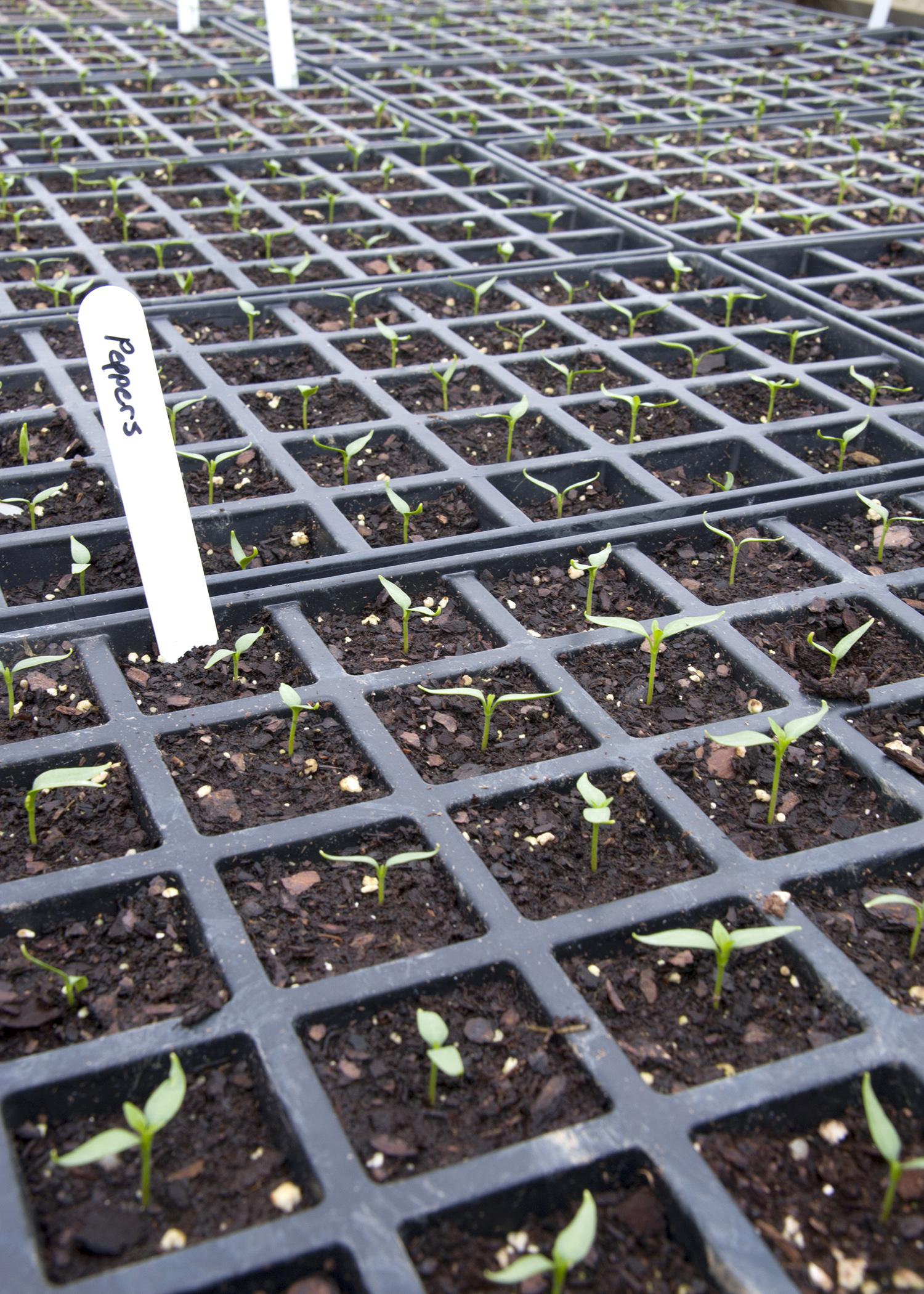Information Possibly Outdated
The information presented on this page was originally released on February 24, 2015. It may not be outdated, but please search our site for more current information. If you plan to quote or reference this information in a publication, please check with the Extension specialist or author before proceeding.
Late winter gardens require maintenance
STARKVILLE, Miss. -- Deep into the winter months, the sunny days of summer seem so far away, but growing a garden doesn’t have to be a warm-weather-only activity in Mississippi.
David Nagel, vegetable and home garden specialist with the Mississippi State University Extension Service, said the state’s climate allows some plants to be grown throughout the winter.
“Now is the time to start monitoring soil temperatures and watching weather forecasts,” he said.
Irish potatoes are a late winter option, as they can be planted when soil temperatures are in the 50s if the soil has drained enough for the top 5 or 6 inches to be dry. Potato leaves are not freeze-tolerant, but planting early allows the roots to be well established by the time temperatures moderate for top growth.
“Potato seed pieces contain enough carbohydrate to initiate several sets of leaves if the first ones are killed by cold temperatures,” Nagel said.
Late January and February is also a good time to plant cabbage for spring gardens. Nagel urged gardeners to consider savoy-leafed cabbages.
“Recent research has shown savoy-leafed cabbage to be a little higher in cancer-fighting compounds than regular head cabbage,” he said. “The crinkled leaves make a milder, less dense coleslaw than regular cabbage, broccoli stems or kohlrabi. To get the most benefit from the natural anticancer compounds, eat cabbage family vegetables raw, steamed or briefly cooked, since long exposure to heat will lessen the effectiveness of the compounds.”
Dry weather in the winter is the perfect time to obtain soil samples and send them in for testing. Gardens should be tested before planting for the first time and then every three years.
“You can obtain the kit for this at your local county Extension office,” Nagel said. “The results of the test will tell you how much of many nutrients are in the soil, as well as the level of acidity. There will also be recommendations on the amounts of fertilizer you need to apply to aid your vegetables in growing.”
Gardeners who intend to have their spring gardens planted by Good Friday should start transplants now.
“This gives you about a month to line up soil, seeds and containers, and clean the place you are going to use,” Nagel said. “Mix your media now if you are going to use a solid organic fertilizer in your media to grow transplants. The month of being moist will allow the fertilizer to begin to break down and be available for the seedlings.”
Strawberries grow through the winter, and should be lightly fertilized during warm, sunny periods.
“Do not apply fertilizer if temperatures in our area remain below 65 and the days are overcast,” he said.
Weather in late winter in Mississippi can vary widely. Weeks of sunshine and moderate temperatures can encourage too-early or too-vigorous growth on vegetables.
Rick Snyder, an Extension vegetable specialist and Mississippi Agricultural and Forestry Experiment Station researcher, said a cold snap can set these plants back.
“There’s not much you can do about freezing temperatures in midwinter. It happens,” Snyder said. “Some growers use spun-bonded fabrics to cover crops, but those will only give a few degrees of protection. They won’t help if temperatures are in the 20s.”
One way to give plants a little freeze protection is to water the soil around the plants.
“As water changes from liquid form to ice, a little heat is released,” Snyder said. “Spraying plants with water with subsequently freezes also provides some protection due to the same principle. This will only give protection for a few degrees and won’t help if temperatures get in the teens or 20s.”
Carefully prune damaged tissue from garden plants that received cold damage. Remember to remove covers when temperatures remain above freezing, as even “clear” plastic diminishes the amount of light hitting the plants leaves. Covers also maintain high humidity levels, which encourage disease organism growth.



